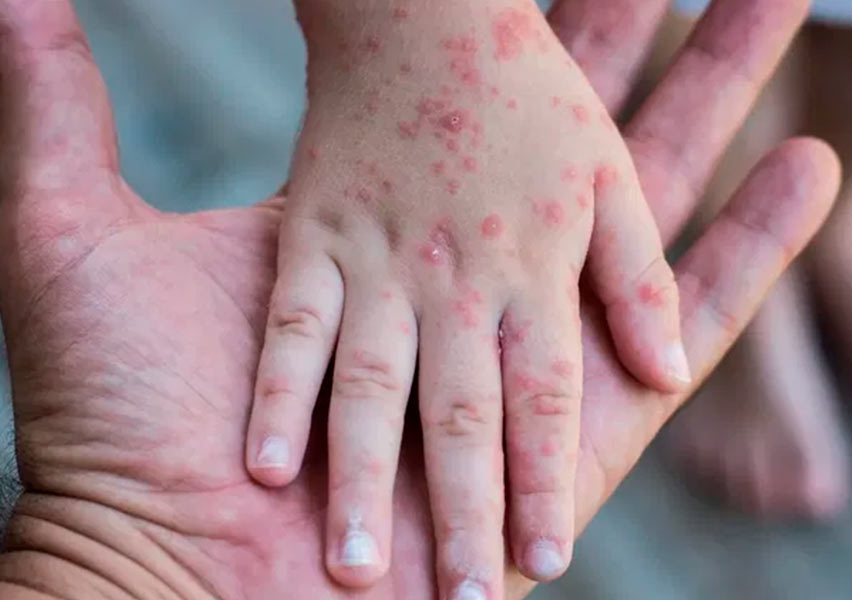Rubella virus
Rubella virus
Rubella virus (Rubivirus rubellae) is a single-stranded RNA virus of the Matonaviridae family. It is the causative agent of rubella, a contagious viral infection that primarily affects children and young adults. While typically mild or asymptomatic, rubella poses a severe risk during pregnancy, particularly in the first trimester, where infection can lead to miscarriage, fetal death, or congenital malformations known as Congenital Rubella Syndrome (CRS).
Clinical characteristics:
After an incubation period of 14 to 21 days, symptoms may include low-grade fever, rash, conjunctivitis, lymphadenopathy, and arthralgia, particularly in adults. The rash, a characteristic feature, typically begins on the face and neck, spreading downwards to the trunk and limbs. It lasts 1 to 3 days and may be accompanied by mild systemic symptoms.
The most distinctive sign is swollen lymph nodes behind the ears and in the neck. In adults, especially women, joint pain or arthritis may occur and persist for several days. Up to 50% of infected individuals may remain asymptomatic.
Transmission:
Rubella is transmitted via respiratory droplets from coughs or sneezes of infected individuals. It is highly contagious, particularly in close-contact environments such as schools. The virus can spread from an infected person to others one week before and up to one week after the appearance of the rash.
Maternal infection during early pregnancy carries up to a 90% risk of transmission to the fetus, leading to congenital rubella syndrome. Infants with CRS can shed the virus for up to a year after birth, acting as a reservoir of infection.
Diagnosis:
Diagnosis is clinical and epidemiological, supported by serological tests (IgM and IgG antibodies) or PCR. Confirmation is especially important in pregnant women due to the risk to the fetus.
Treatment:
There is no specific antiviral treatment for rubella. Management is supportive, focusing on rest, hydration, and symptom control. The infection is self-limiting in most cases, with full recovery in a few days.
Prevention:
Vaccination with the MMR (measles-mumps-rubella) vaccine is the most effective preventive measure. It is safe, highly effective, and part of routine childhood immunization schedules. Ensuring immunity in women of childbearing age is essential to prevent congenital rubella.
Other preventive measures include:
- Isolating infected individuals during the contagious period
- Monitoring and controlling outbreaks
- Public health campaigns to increase vaccination coverage

